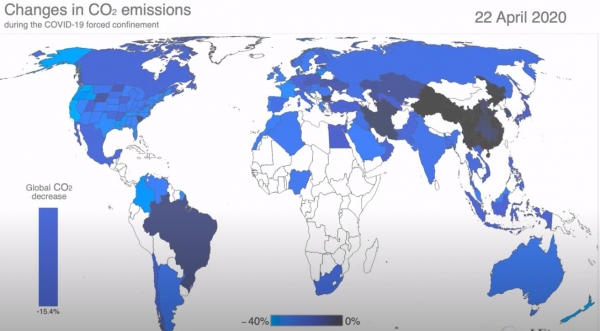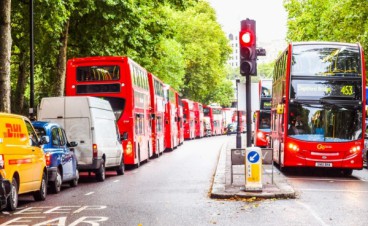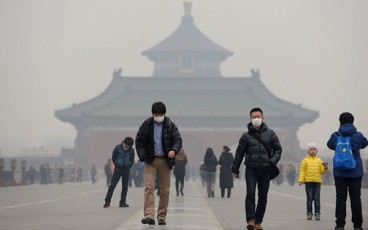17% carbon emissions reduction during COVID-19 lockdown

According to a new study, global carbon emissions have been reduced by 17% during the lockdown followed by the COVID-19 outburst.
The coronavirus pandemic was diagnosed in late 2019 and became an epidemic on March 11, 2020. Since then, people have drastically changed their routines, and humanity has decreased its environmental footprint.
Global carbon emissions experienced a steady 1% growth over the past decade and were stabilized in 2019 as a result of using more clean energy.
A new study, published in Nature Climate Change, suggests that emissions during the peak of the lockdown measures (April 2020) have been decreased by 17% compared to 2019 data.
In particular, the reduction was determined at 1048 million tons of CO2 emissions by the end of April 2020. China, United States, Europe and India were the most significant contributors to the reduction.
The current levels correspond to those recorded in 2006. According to estimates, the annual reduction of 2020 compared to 2019 will range between 4% and 7% depending on the duration of the restriction measures across the globe.
The most important sectors that were affected and their percentage contribution to the emission reductions are the following:
- Transportation (43%). The decrease is associated with social distancing, people working from home and those avoiding unnecessary transport.
- Industry and power (43%). The industry section refers to the production of building materials such as concrete, cement and steel and the construction processes whereas the power section includes energy conversion for electricity and heat generation. Both sectors were impacted during the lockdown.
- Aviation (10%). Despite the fact that aviation was highly affected by COVID-19, its impact is relatively small since it is associated with only 3% of the total emissions worldwide.
Other sectors were also affected but, their contribution was balanced with the emissions increase associated with the housing sector (people stayed more time at their residences increasing the amount of the consumed energy).
Corinne Le Quéré, lead author of the study and a Professor of Climate Change Science at the University of East Anglia stated that even if the findings are promising, the reduction will probably not have a great impact on climate change since it will be a temporary condition. In order to take advantage of the situation, radical changes must be implemented when people return to their ordinary lives. “Population confinement has led to drastic changes in energy use and CO2 emissions. These extreme decreases are likely to be temporary though, as they do not reflect structural changes in the economic, transport, or energy systems," Prof. Le Quéré, stated. She also added that the unprecedented conditions that we experience may be an opportunity to change our perspective regarding our carbon emission footprint. "...in cities and suburbs, supporting walking and cycling, and the uptake of electric bikes, is far cheaper and better for wellbeing and air quality than building roads, and it preserves social distancing,” she mentioned.
Click the video below to watch a daily animation of the carbon emissions reduction in 2020.
Source: University of East Anglia
Source: University of East Anglia
Media
- Carbon Dioxide Emissions in 2020
- UEA
Want to read more like this story?
The prospects for carbon-neutral buildings
Oct, 27, 2023 | NewsIn the United Kingdom, buildings account for 33% of greenhouse gas emissions and 40% of global ener...

UK’s decarbonized transport project initiates
Apr, 13, 2020 | NewsThe United Kingdom Department for Transport (DfT) has developed a thorough plan to completely d...

China responsible for about 10% of global warming since the pre-industrial era
Mar, 27, 2016 | NewsThe flip side of an economic miracle The flip side of an economic miracle China is a country wit...

Carbon sequestration in soils cannot fix climate change to the extend it was thought to
Nov, 01, 2016 | NewsSoil as carbon storehouse needs to be part of, not the whole solution Soil as carbon storehouse n...

Historic deal to address shipping emissions
May, 09, 2018 | NewsShipping, previously excluded from climate agreements, should now cut CO2 emissions by at least 50%...

EPA Releases Greenhouse Gas Emissions Data from Large Facilities
Oct, 03, 2014 | NewsToday, the U.S. Environmental Protection Agency (EPA) released its fourth year of Greenhouse Gas Rep...

Norway aims to achieve carbon neutrality by 2030, twenty years ahead of schedule
Aug, 19, 2016 | NewsThe country’s gesture is more than welcome, although there is a lot of skepticism regarding it...

How climate change has affected real estate business
Nov, 11, 2019 | NewsClimate change is a phenomenon that leads to sea water-level rise affecting the coastal areas. But h...

Canada Pledges to Reduce Greenhouse Gas Emissions by 2030, No Regulations for Oil Sands
May, 15, 2015 | NewsCanada has announced new goals to greenhouse gas emissions to thirty percent below 2005 levels by 20...
Trending

Vertical gardens in Mexico City to combat pollution

Saudi Park Closed After 360 Big Pendulum Ride Crashes to Ground, 23 injured

Characteristics of Load Bearing Masonry Construction

Taipei 101’s impressive tuned mass damper

Dutch greenhouses have revolutionized modern farming

Federal court rules Biden’s offshore drilling ban unlawful


